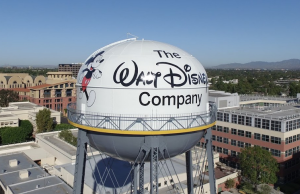
After more than 40 years of operation, DTVE is closing its doors and our website will no longer be updated daily. Thank you for all of your support.
Disney: ‘marriage of content engines’ will drive engagement

Source: Disney
Disney is looking to “a marriage of our content engines” to drive engagement in its streaming offering, according to CEO Bob Iger.
Speaking at the MoffettNathanson Media, Internet and Communications conference this week, iger said that in June in Latin America the company is bringing together the two sides of its streaming business – Disney+ and its general entertainment and sports business – into a single entity – part of a general strategy of combining its offerings to drive the stickiness of the whole.
Disney plans to follow this initial step up by adding ESPN to its combined Disney+ and Hulu offering in the US. In December, there will be “an ESPN presence” on the Disney+ app, and ESPN+ subs will get that as part of their subscription, said Iger.
Engagement appears to be Disney’s watchword as it seeks to steer streaming to profitability. To turn streaming to a growth business and lower churn rates, which is key to increasing margins, “you need to have enough engagement” from the audience, said Iger.
In a year, the combined Disney+-Hulu-ESPN offering will expand to incorporate the full suite of ESPN, with subscribers getting as part of their bundle with Disney+ and Hulu.
Iger said that Disney was also working on personalising its sports offering in the longer term, providing content tailored to individual customers.
While Disney, which had launched into streaming as “rookies”, had reached 100 million subscribers faster than anyone had thought possible, little attention had been paid to “all the other factors” that contributed to turn streaming into a profitable business, said Iger.
Iger said that combining Disney+ with Hulu was increasing engagement. “The combination of those two is an engagement play,” he said.
Adding ESPN, starting with “ESPN light”, will create a combination that will “increase engagement to an extraordinary degree”, he said.
Making streaming profitable

Bob Iger
Iger said that Disney now knew “exactly what we have to do” to make streaming profitable.
Beyond engagement, the company has to tackle password sharing, and will start “rolling out more aggressively across the globe” with its credential-sharing crackdown from November, he said.
The third pillar to reaching profitability is to cut costs. Marketing spend is still too high, and not targeted enough, said iger. Netflix is “brilliant” at targeted marketing to those likely to churn, he said.
He said that Disney would have to make some technology investments to achieve the same results but would be able to decrease its overall marketing spend eventually as a result.
Iger said that traditional media would not be a growth business but could still be an important element in helping the company engage with the consumer. He said that spending less on those traditional networks while managing traditional channels and streaming together made sense.
“We are aggregating greater audience and amortising costs,” he said. “We are doing that across the board and it is working.”
He said that “managing costs effectively” would enable the company to make the most of traditional linear media.
Volume versus quality
Reflecting on the challenges Disney has faced since it launched Disney+, Iger said that giving creatives P&L responsibility to ensure that money was spent wisely was key.
“When the CEO of the company had a deep creative background, the company thrived,” said Iger. “The entire organisation knows that there is some guy in a corner office watching everything carefully.”
Creating “volume and not quality” and spending too much had proved to be a mistake for the company in its early foray into streaming, he said.
Iger said that he had previously created an organisation “designed to serve streaming” because he wanted people responsible for content “to concentrate on that”.
He said that he did not remove P&L responsibility from the content creators, but successor Bob Chapek had taken P&L responsibility away from the creatives and given it to the distribution arm.
This, he said, had proved to be a mistake and it had proved important to return P&L responsibility to those spending the most money.
“Those investing the most capital in content…are responsible for how that content is monetised,” he said.
Iger said the division of the company into experiences, entertainment and sports that he had promoted since his return was “the cleanest” organisation Disney had ever had.
In addition to his reflections on streaming, Iger was bullish about the experiences side of the business, with new investments planned in parks and cruise liners. He said that Disney’s park in Shanghai, despite being hit by Covid, was highly popular and was helping drive awareness of Disney’s content throughout China.
Iger said that the faltering of the movie studio, the flattening out of traditional media and the losses incurred in building streaming meant that the experiences business had become hugely important in supporting the company’s bottom line.


